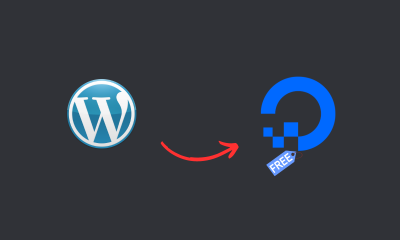If you’re looking to create a website or blog, WordPress is one of the most popular content management systems available. It’s easy to use, highly customizable, and has a large community of developers and users who have created a vast array of plugins and themes.
However, to get your WordPress site up and running, you’ll need a hosting provider and a control panel to manage your website. That’s where Virtualmin comes in – a powerful web hosting control panel that makes it easy to manage your website and hosting services.
In this article, we’ll guide you through the process of installing WordPress on Virtualmin, step-by-step.
But first, let’s dive into what WordPress and Virtualmin are.
What is WordPress?
WordPress is a free and open-source content management system (CMS) that powers over 40% of all websites on the internet. It was first released in 2003 and has since evolved into a robust platform for creating websites and blogs.
One of the reasons for WordPress’s popularity is its ease of use. With a simple and intuitive interface, you don’t need any coding knowledge to create a professional-looking website. Additionally, WordPress has a massive community of developers and users who have created thousands of plugins and themes that can be used to extend and customize the platform.
What is Virtualmin?
Virtualmin is a web hosting control panel that provides an easy-to-use interface for managing your website and hosting services. It’s open source and free to use, and it supports a wide range of hosting providers and operating systems.
With Virtualmin, you can create virtual servers, manage DNS records, configure email accounts, and install web applications like WordPress. It’s a powerful tool that makes managing your website and hosting services much easier.
Read also: List of VPS Hosting Providers with Port 25 Open
How to Install WordPress on Virtualmin
Now that you know what WordPress and Virtualmin are let’s get started with installing WordPress on Virtualmin.
Step 1: Create a Virtual Server
The first step is to create a virtual server on Virtualmin. To do this, log in to your Virtualmin account and click on the “Create Virtual Server” button. You’ll be asked to enter some basic information, such as the domain name, username, and password.
Step 2: Create a MySQL Database
Once you’ve created a virtual server, the next step is to create a MySQL database for WordPress. To do this, click on the “Edit Databases” button in the “Virtualmin” section of your virtual server’s control panel. Then, click on the “Create a new database” button and enter a name for your database.
Step 3: Install WordPress
Now it’s time to install WordPress. Virtualmin has a script installer that makes it easy to install web applications like WordPress. To access the script installer, go to the “Install Scripts” section of your virtual server’s control panel and click on the “WordPress” link.
You’ll be asked to enter some basic information, such as the domain name, database name, and database username and password. Once you’ve entered this information, click on the “Install Now” button, and Virtualmin will take care of the rest.
Step 4: Configure WordPress
After you’ve installed WordPress, it’s time to configure it for your website. You can access your WordPress site by going to the domain name you used when installing WordPress.
From here, you can customize your site’s appearance by choosing a theme, adding plugins, and creating pages and posts. WordPress has a wide range of customization options, so take some time to explore and experiment with different features.
Conclusion
In conclusion, WordPress is a powerful content management system that can be easily installed on Virtualmin, a web hosting control panel.











